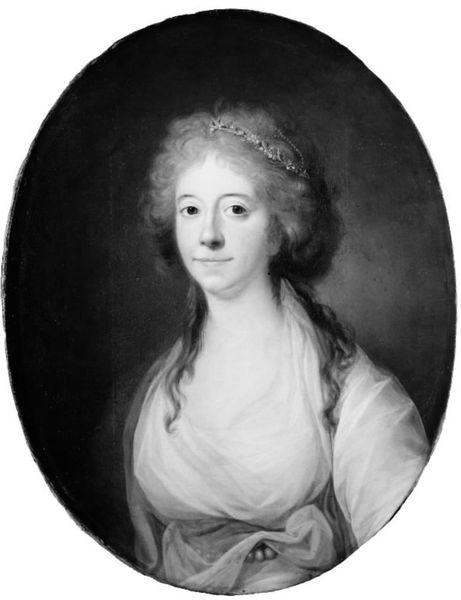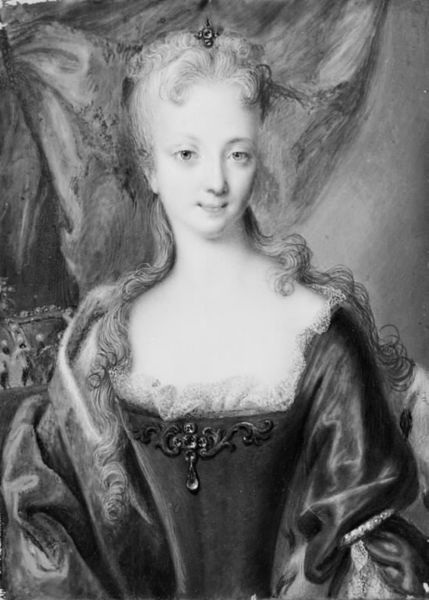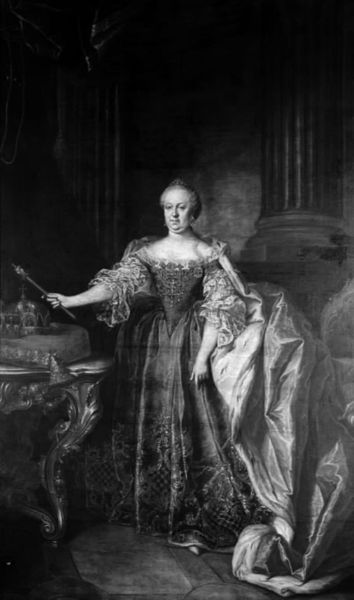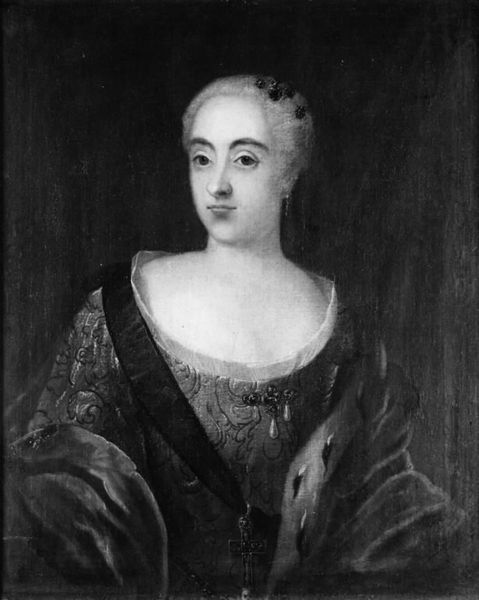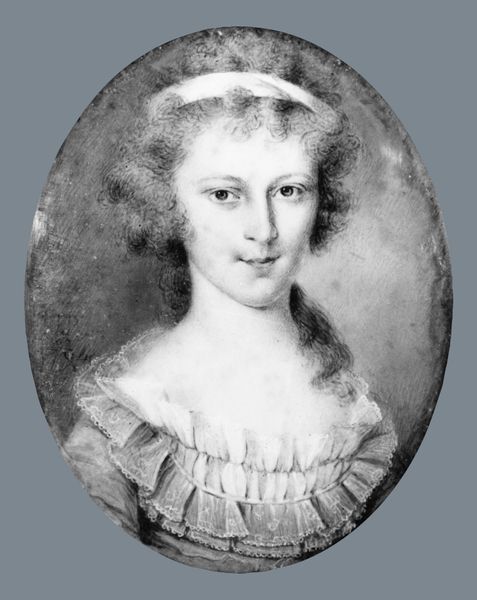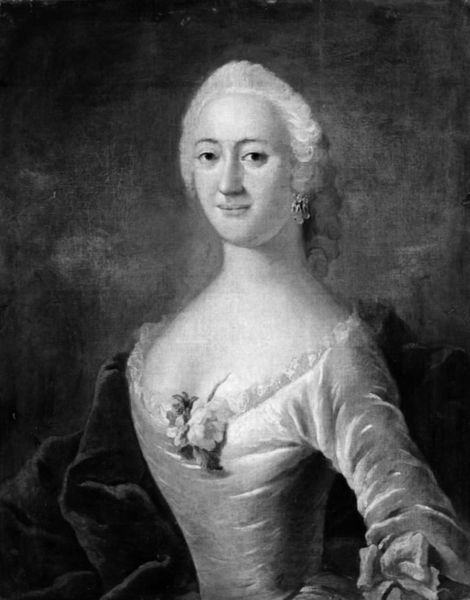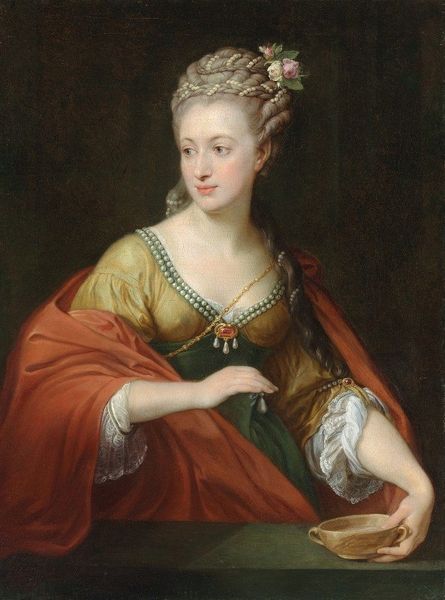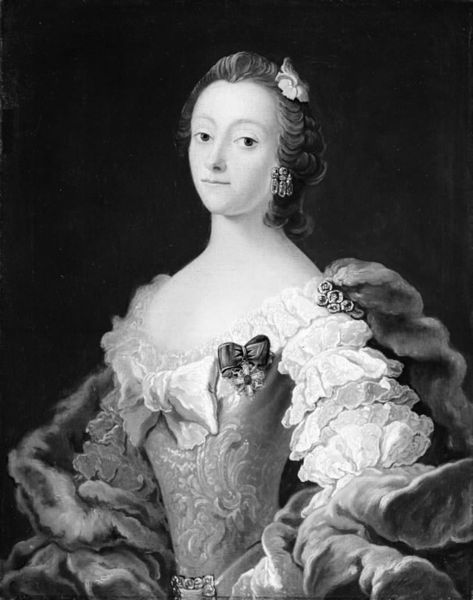
painting, oil-paint
#
portrait
#
allegory
#
baroque
#
portrait
#
painting
#
oil-paint
#
figuration
#
history-painting
#
realism
Dimensions: 92 cm (height) x 74 cm (width) (Netto)
Curator: Here we have a curious portrait, titled “Portrait of a Lady Dressed as Flora.” Its creation is currently attributed to an anonymous artist and it's estimated to have been completed sometime between 1651 and 1700. Editor: My first impression is one of controlled elegance, bordering on theatrical. The way she presents the floral wreath almost feels like an offering. It’s interesting. Curator: Indeed. The choice of Flora, the Roman goddess of springtime and flowers, connects her to themes of fertility, renewal, and beauty. Dressing as a mythological figure was a popular form of allegory in portraiture, particularly during the Baroque period. It imbued the subject with particular qualities and elevated the painting beyond a mere likeness. Editor: I agree, it does more than just depict her physical form. Look at the contrast between her delicate features and the structured composition— the framing by the architecture on the left, the soft atmospheric perspective in the background. These details pull you into the idealized scene the painter has constructed for us. And she holds the floral wreath away from her person; is she in union with the promise of springtime or observing it? Curator: I’m intrigued by the cultural context of choosing Flora. Spring represented not just a seasonal change, but a symbolic rebirth, reflecting optimism. It implies the subject possessed a certain grace and virtuous nature associated with these traits. Editor: Note the subtle color palette - primarily in muted tones allowing attention to the subject but not distracting. What I find fascinating is how these compositional and material elements combine to convey a restrained yet undeniable sensuality, as seen through the fabrics in use. Curator: Right! The historical moment favored a celebration of beauty in particular ways, and her symbolic dressing does reflect a conscious display of power, or at least social significance. Editor: It’s fascinating to dissect this work and reveal these carefully constructed meanings. I can definitely say that focusing on the artwork has given me a fresh outlook on it. Curator: I agree. Looking at her use of symbols in their time offers so much information. It creates an enriching experience in connecting this person to her era.
Comments
No comments
Be the first to comment and join the conversation on the ultimate creative platform.

